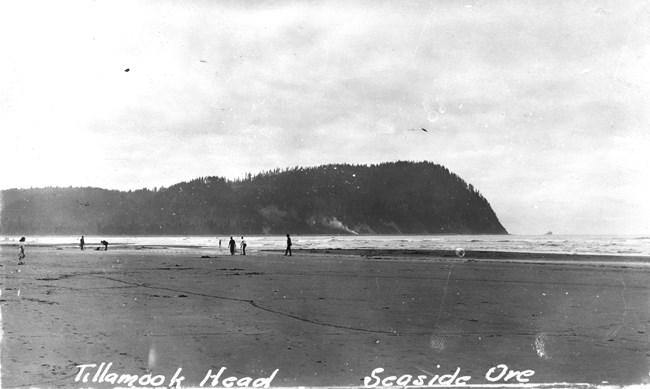Last updated: November 28, 2023
Article
How To Make Salt

Oregon State University
Joseph Field, William Bratton, and George Gibson, members of the Lewis and Clark Expedition, spent the winter of 1805–1806 making salt near a Clatsop-Nehalem village on the Oregon coast.
How did they do it?
It’s pretty simple. Here’s what they needed:
-
Five kettles
-
Wood
-
Rocks
-
Iron kegs
-
Seawater
First, they piled rocks with room for firewood underneath. They probably lit the fire first, to get it started heating up. Next, they went down to the beach, filled the kettles with seawater, and placed them on top of the rock cairns.
After all the water boiled away, only salt remained in the bottom of the kettle.
Field, Bratton, and Gibson would have scraped that salt out of the kettle, stored it away, and then walked down to the ocean to re-fill the kettle.
Working around the clock, these men could produce almost a gallon of salt a day. Meriwether Lewis thought this was slow—he wrote, “we find it a very tedious opperation” to make salt with just the five kettles they had.
William Clark thought the salt was “excellent white & fine, but not So Strong as the rock Salt or that made in Kentucky.”
In mid-February, the salt makers packed up their camp. At that point, Lewis wrote, “our stock of salt is now about 20 Gallons; 12 gallons of which we secured in 2 small iron bound kegs and laid by for our voyage.”
About this article: This article is part of a series called “Pivotal Places: Stories from the Lewis and Clark National Historic Trail.”
